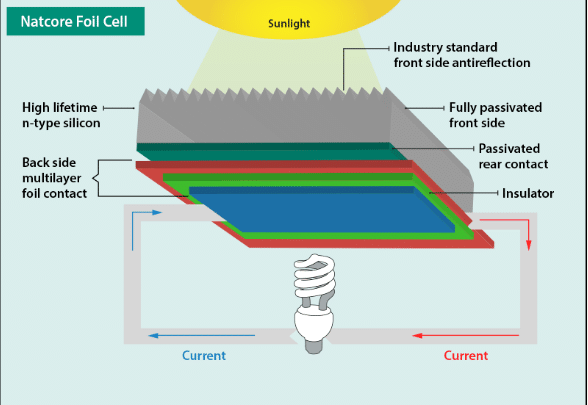Cell efficiencies and low production costs: the two joint Holy Grails that could unlock solar’s full potential in the United States. And at least two companies believe they may be on the cusp of unlocking those secrets.
U.S. cell manufacturer Natcore Technology has joined forces with Italian manufacturer Coveme, whose specialty is the manufacture and conversion of polyester films. The companies expect the partnership to accelerate the development and commercialization of Natcore’s Foil Cell, which moves away from traditional solar cell production.

Natcore Technology
Instead, it combines a laser process with a new metallization process, thus enabling high-efficiency cell architectures at low cost. The key to the Foil Cell’s development is that it is metallized by attaching a bi-layer aluminum foil laminate. It makes fabricating several silicon-based, all-back contact cell architectures easier, which allows for faster, less expensive manufacturing.
“We developed the technology behind the Foil Cell in our Rochester lab,” said Chuck Provini, Natcore’s president and CEO. “But we need additional expertise to help take it to the next level. Coveme will help us develop a full-scale prototype and ready the cell for production.”
Under the partnership agreement, the two companies will develop high-throughput manufacturing methods to produce laser-processed all-back-contacts on silicon solar cells. David Levy, Natcore’s director of research and technology, will head the joint project for Natcore, while Matteo Racchi will be the team leader for Coveme.
“Natcore will develop their foil all-back-contact process to be compatible with foil designs and samples provided by Coveme,” says Gian Paolo Fedrigo, Coveme’s CEO. “They will construct devices using their own technology along with the foil samples. We will give them information regarding foil contact structures, and we’ll design and fabricate foil samples for their use in constructing test solar cells.”
This content is protected by copyright and may not be reused. If you want to cooperate with us and would like to reuse some of our content, please contact: editors@pv-magazine.com.








Frank
Haven’t seen any news recently about Natcore commercialization. What can you tell us?
Frank doesn’t write for us anymore, and we haven’t heard anything.